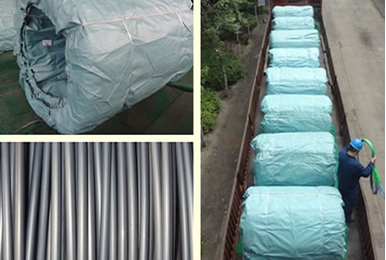aug . 19, 2024 05:26 Back to list
Affordable Thermal Insulation Options for Cost-Effective Material Solutions
Exploring Cheap Material Options for Thermal Insulation
Effective thermal insulation is a critical component in both construction and renovation projects, particularly in regions with extreme weather conditions. The demand for energy-efficient buildings has driven interest in various insulation materials, including those that are cost-effective. In this article, we will explore some affordable thermal insulation options, their properties, and their applications.
1. Fiberglass Insulation
Fiberglass is one of the most commonly used insulation materials due to its affordability and effectiveness. Composed of fine glass fibers, it is available in batts, rolls, and loose-fill forms. Fiberglass insulation has a high R-value, indicating its effectiveness in resisting heat flow. This material is non-combustible and resistant to moisture, making it suitable for various climates. When properly installed, it can significantly reduce heating and cooling costs. However, safety precautions are needed during installation, as the glass fibers can irritate the skin, eyes, and respiratory system.
2. Cellulose Insulation
Cellulose insulation is made from recycled paper products, making it an environmentally friendly and cost-effective option. It is treated with fire-retardant chemicals and can be installed in walls, floors, and attics, providing excellent thermal resistance. Cellulose is often available in loose-fill form and is blown into cavities, which allows for a snug fit around obstacles and reduces air leakage. Its high R-value and ability to trap air make it an excellent choice for thermal insulation. Moreover, cellulose has excellent soundproofing qualities, which is an added benefit for residential buildings.
3. Mineral Wool (Rock Wool) Insulation
cheap material thermal insulation

Mineral wool, also known as rock wool, is made from natural stone or recycled materials. Like fiberglass, mineral wool is non-combustible and offers good thermal and acoustic insulation properties. It is highly resistant to moisture and mold, making it an effective choice for areas prone to dampness, such as basements. The cost of mineral wool insulation varies depending on the thickness and installation method, but it remains a viable option for budget-conscious projects.
4. EPS and XPS Foam Board Insulation
Expanded polystyrene (EPS) and extruded polystyrene (XPS) foam boards are rigid insulation materials that provide good thermal performance at a relatively low cost. EPS is lightweight and easy to cut, making it ideal for various applications, including wall sheathing, under slabs, and roofs. XPS, while slightly more expensive than EPS, has superior moisture resistance and compressive strength. Both materials can be used in new constructions and retrofitting projects, especially in climates where moisture and thermal resistance are crucial.
5. Straw Bales
For an unconventional yet inexpensive insulation option, straw bales offer an eco-friendly solution. This natural material, derived from agricultural waste, has excellent thermal properties and can be used in constructing durable and energy-efficient homes. Straw bale construction not only provides good insulation but also contributes to sustainability. However, it requires careful design and implementation to prevent moisture issues and ensure longevity.
Conclusion
When considering thermal insulation, the initial cost is an important factor, but it's equally essential to evaluate performance and sustainability. Cheap materials like fiberglass, cellulose, mineral wool, foam boards, and straw bales each offer unique benefits and can significantly enhance a building's energy efficiency. Selecting the right insulation material will lead to lower energy bills, improved comfort, and a reduced environmental impact, making it a worthy investment for both homeowners and builders alike.
-
High-Quality Fe-C Alloy Leading Manufacturers & Spherical Alloy Materials Supplier
NewsJun.10,2025
-
Premium Low Nitrogen Recarburiser Supplier & Manufacturer – High Quality Exporters
NewsJun.10,2025
-
DT4 High-Quality Magnetic Materials Leading DT4 Manufacturer & Supplier
NewsJun.10,2025
-
High-Performance Spring Steel Suppliers Custom Solutions
NewsJun.10,2025
-
Premium SWRCH6A Manufacturer Steel Wire Supplier & Factory
NewsJun.10,2025
-
Premium Mild Steel Wire Rod Supplier & Manufacturer
NewsJun.10,2025
